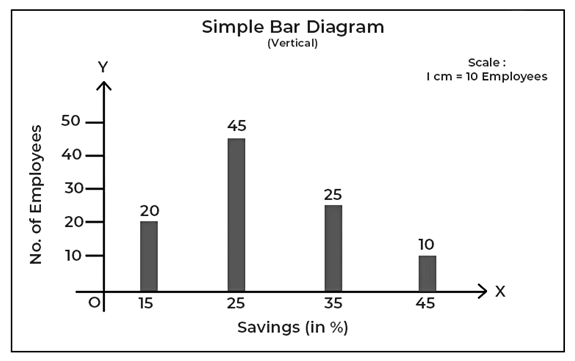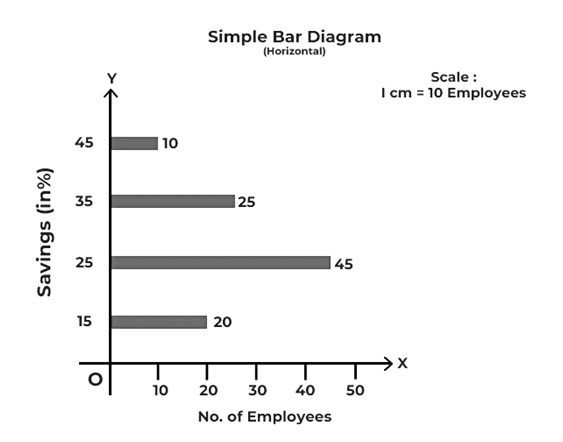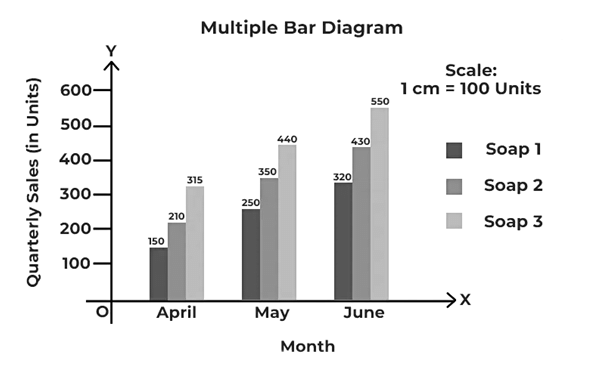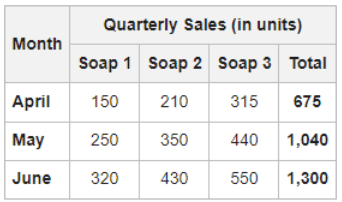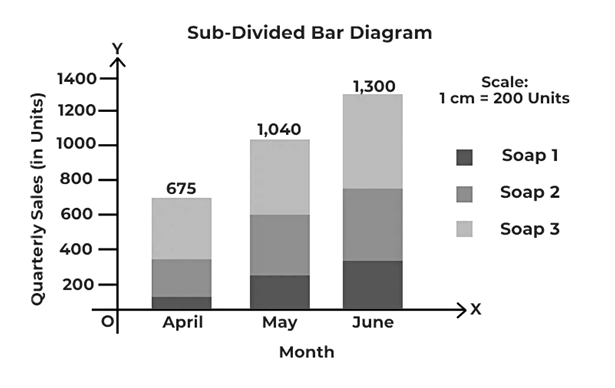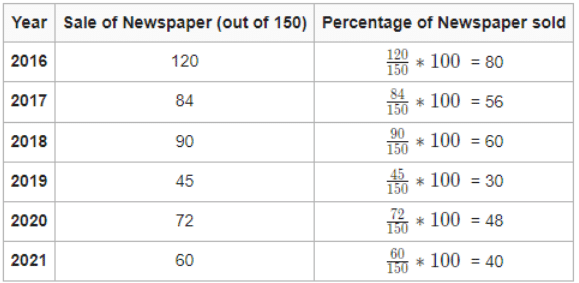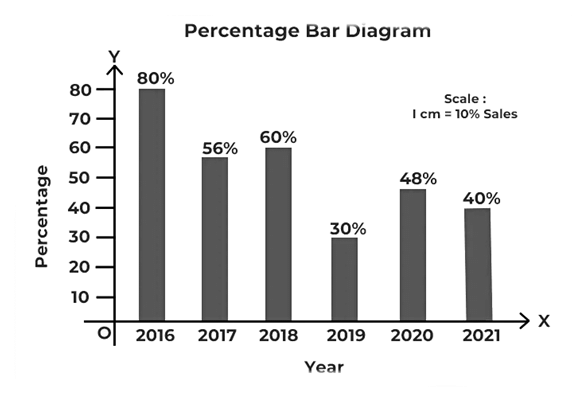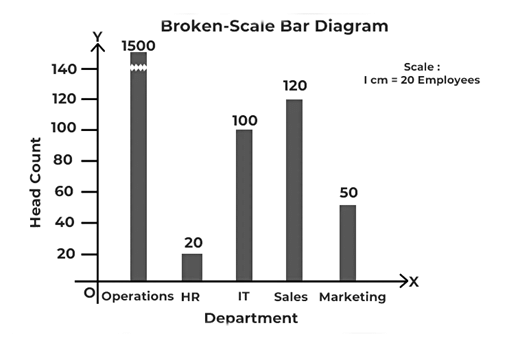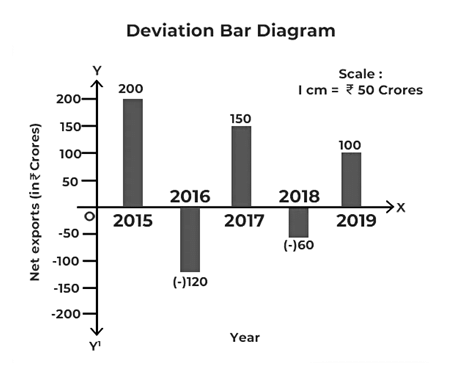Understanding Bar Graphs | General Test Preparation for CUET UG - CUET Commerce PDF Download
| Table of contents |

|
| What are Bar graphs? |

|
| Types of Bar Graphs or Bar Diagrams |

|
| Advantages of Bar Graphs |

|
| Disadvantages of Bar Graphs |

|
What are Bar graphs?
Bar graphs are used to visually represent data, where the length or height of bars corresponds to the value of the data. They are useful for comparing quantities across different categories.
Bar graphs have three parts:
- X-axis (Horizontal axis): This axis typically shows the categories or groups being compared.
- Y-axis (Vertical axis): This axis shows the values or frequencies corresponding to each category.
- Bars: Each bar represents a category, and its length or height corresponds to the value or frequency for that category.
Types of Bar Graphs or Bar Diagrams
The different types of Bar Graphs are as follows:

1. Simple Bar Graph/Diagram
A diagram in which each class or category of data is represented by a group of rectangular bars of equal width is known as a Simple Bar Diagram. It is the simplest type of bar diagram. In this diagram, each bar represents one figure only. The number of bars will be equal to the number of figures. These diagrams show only one characteristic of the data, such as sales, production, or population figures for various years.
The magnitude of data is determined by the bar’s height (or length). The lower end of the bar touches the baseline; therefore, the height of a bar starts from the zero unit. These diagrams can be vertical or horizontal in layout:
- Vertical Bar Graph/Diagram: The diagram in which the magnitude of the data is presented vertically, i.e., along the Y-axis, is a Vertical Bar Diagram.
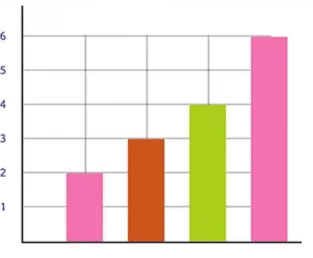
- Horizontal Bar Graph/Diagram: The diagram in which the magnitude of the data is presented horizontally; i.e., along the X-axis is a Horizontal Bar Diagram.
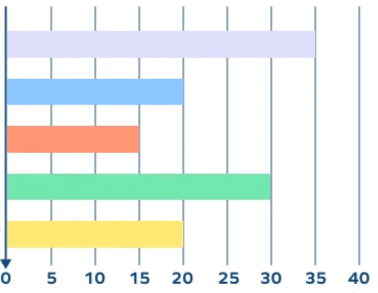 The bars of a bar diagram can be visually compared by their relative height, and data can be easily comprehended accordingly.
The bars of a bar diagram can be visually compared by their relative height, and data can be easily comprehended accordingly.
Example 1:
The following table shows the percentage of monthly salary saved by each employee in a 100-person company. Create a vertical and a horizontal bar diagram to represent it.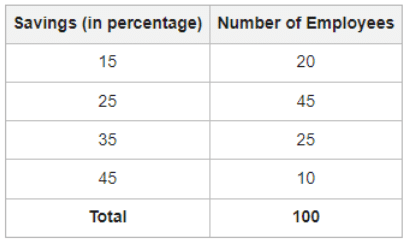
Sol:
2. Multiple Bar Graph/Diagram
The Multiple Bar Diagram is used to compare two or more variables, such as revenue and expenditure, marks obtained in different subjects in different grades, and so on. It is often referred to as a Compound Bar Diagram. The method for creating multiple bar diagrams is the same as for making a Simple Bar Diagram. However, to distinguish the bars from each other, different bars are differentiated by different shades or colours.
Example 2:
A company manufactures three varieties of soap. Represent the following information showing the quarterly sales (three months) using a multiple-bar diagram.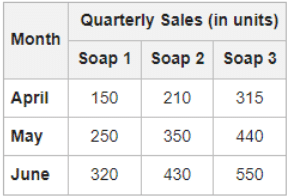
Sol:
3. Sub-Divided Bar Graph/Diagram
In these diagrams, the bar corresponding to each phenomenon is divided into several components. Each part or component occupies a proportional part of the bar to its share in the total. For example, the bar corresponding to the number of students enrolled in a course can be further sub-divided into boys and girls.
- When preparing a sub-divided bar diagram, the various components in each bar should be kept in the same sequence.
- It is important to use different colours or shades to differentiate between different components.
- A suitable index should explain these various colours or shades.
- These diagrams are quite useful for comparing the sizes of various parts and throwing light on the relationship between these integral parts. For instance, such diagrams are used to present data such as sales profits from various products, a family’s expenditure pattern, the budget outlay for receipts and expenditures, and so on.
Example 3:
Represent the following information using a sub-divided bar diagram, showing the quarterly sales of three varieties of soap manufactured by a company.
Sol:
4. Percentage Bar Graph/Diagram
A Percentage Bar Diagram is a sub-divided bar diagram that indicates the total percentage of each component rather than the magnitude. The absolute magnitudes of several components are presented using a subdivided diagram. These magnitudes can be converted into relative values by describing them as a percentage of the total.
Each data component is expressed as a percentage of the corresponding total. Thus, in a percentage bar diagram, all of the bars are of height 100, while the different segments of the bar representing the various components vary in size depending on their % value of the total. Just like in the sub-divided bar diagram, in the percentage bar diagram, different components can be differentiated by different shades or colours.
Example 4:
The table below displays the number of newspapers sold out by the company, out of the total printed newspaper from 2016 to 2021.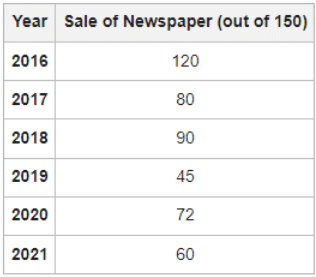
Sol:
5. Broken-Scale Bar Graph/Diagram
This diagram is used when the value of one variable is extremely high or extremely low compared to others. Larger bars may be broken to make space for the smaller bars of the series. Every bar has its value written on the top of the bar. When the majority of the data figures are of low magnitude and one or more of the figures are of unusually large magnitude, a broken-scale diagram is used to present the data.
Example 5:
Prepare an appropriate diagram using the following data.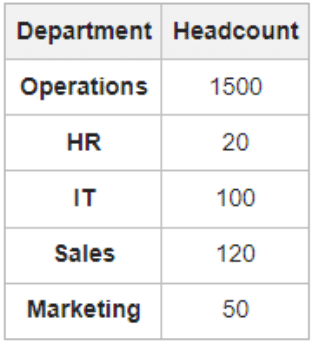
Sol:
6. Deviation Bar Graph/Diagram
These diagrams are used to represent net changes in data such as net profit, net loss, net exports, net imports, etc.
- In these diagrams, only changes are shown, not the original data.
- The values in these diagrams might be both positive and negative.
- Positive values are displayed above the X-axis (Base line), while negative values are below it.
Example 6:
The following table shows the data relating to the net exports of a company in different years. Use a deviation bar diagram to represent the profit/loss made by the firm.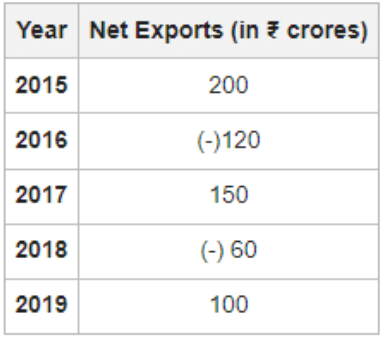
Sol:
Features of Bar Graph/Diagram
- In this diagram, the magnitude of the characteristics is shown by the length or height of the bar.
- The width of a bar is arbitrarily set to make the constructed diagram more elegant and attractive.
- The length and height of the bars vary depending on the variable value. However, the width of the bar remains constant.
- The width of a bar is also determined by the number of bars that must be accommodated in the diagrams.
- The bars must be equidistant from one another.
- Bars can be drawn horizontally or vertically. They are, however, usually in vertical form.
- The side or vertical axis of a bar graph is called the y-axis and the bottom or horizontal axis of a bar graph is known as the x-axis.
- The y-axis represents data value, while the x-axis represents data type.
Advantages of Bar Graphs
Easy to Create and Understand: Bar graphs are simple to make using paper or computer tools. They allow for quick data comparison. Vertical bar graphs work well for few categories, while horizontal bar graphs are better for many categories. Stacked and grouped bar diagrams help show data segmentation and time trends.
Used in Various Industries: Bar graphs are common in fields like epidemiology to track diseases, in business to analyze finances and sales, and in personal finance tracking.
Simplifies Data Comparison: Bar graphs allow easy comparisons of data, such as product sales in different sectors. They help businesses assess store performance and areas that need focus.
Visual Summary of Large Data: Bar graphs represent large datasets clearly, showing individual values and trends. For example, businesses can use them to track delivery times during peak and off-peak periods.
Helps in Pattern Analysis: Bar graphs make it easier to identify trends over time. They are simpler to interpret than numerical tables, allowing users to see patterns and trends at a glance.
Disadvantages of Bar Graphs
- Needs Extra Explanation: Bar graphs may need further clarification, especially for complex data. Labels alone are often insufficient, requiring examples to fully explain the data.
- Can Be Manipulated: In the digital age, bar graphs are easy to modify, sometimes leading to misrepresentation. Manipulating the axes or data can deceive readers.
- Cannot Show Relationships Between Activities: While bar graphs can estimate the time or effort for tasks, they do not reveal how tasks are interrelated, making them unsuitable for project management or control.
- Cannot Show Progress: Bar graphs present data systematically but cannot track progress or delays in activities. They are not suitable for fast-moving environments where tracking progress is important.
|
164 videos|626 docs|1131 tests
|
FAQs on Understanding Bar Graphs - General Test Preparation for CUET UG - CUET Commerce
| 1. What are the different types of bar graphs? |  |
| 2. What are the advantages of using bar graphs? |  |
| 3. What are the disadvantages of bar graphs? |  |
| 4. How can I interpret a bar graph effectively? |  |
| 5. In what scenarios should I use a bar graph instead of other types of graphs? |  |

